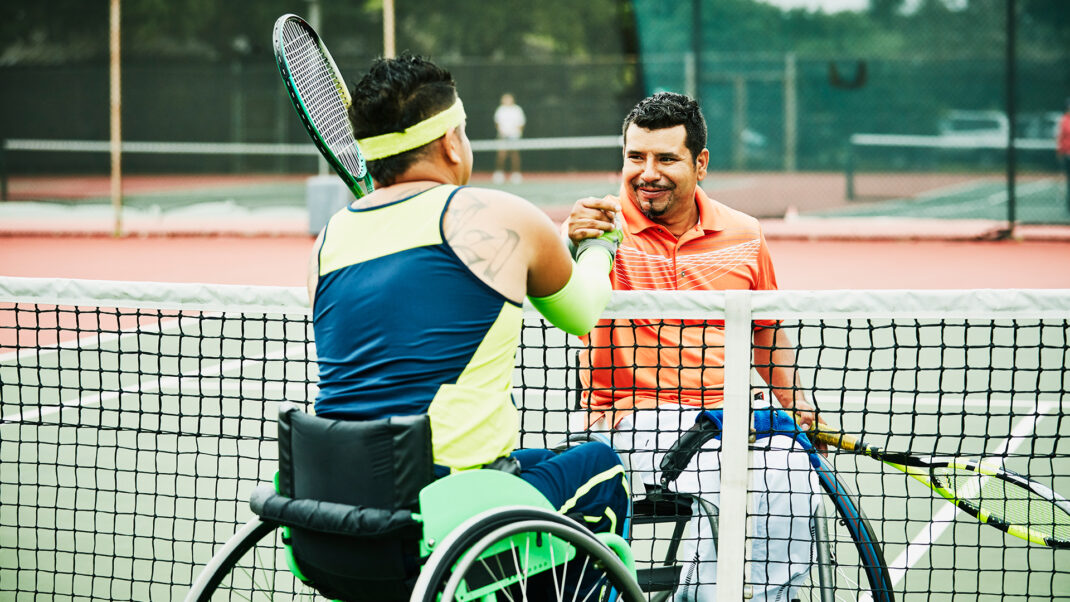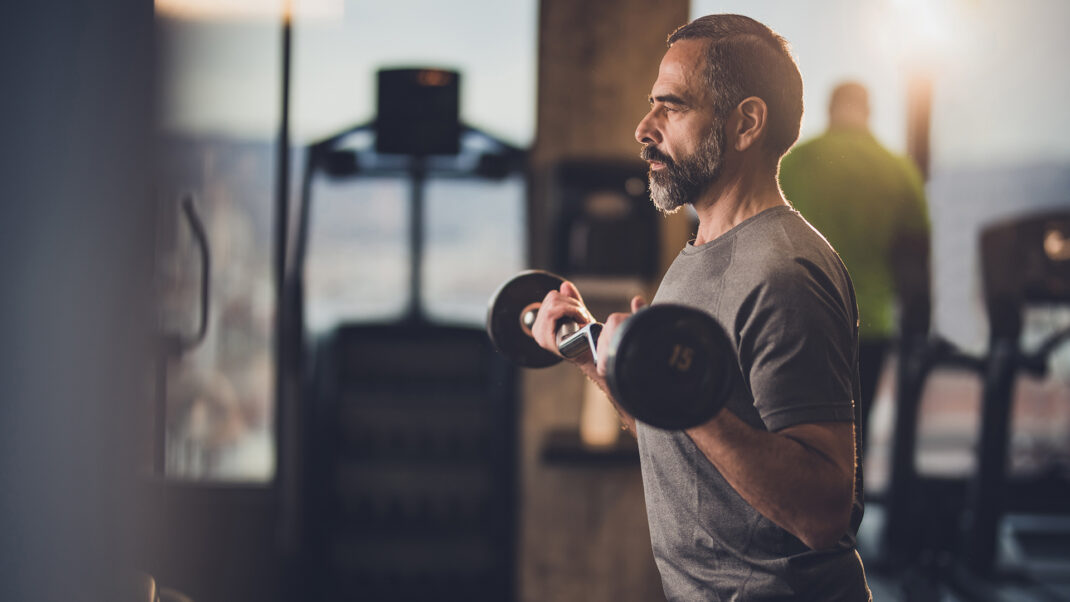It’s a Family Affair
Programming to include the whole family.

The challenge: The President’s Council on Physical Fitness and Sports reports on its website that between 1980 and 2002 the number of obese children and teens in the United States tripled. During the same period, health conditions traditionally associated with adults—type 2 diabetes, high blood pressure and high cholesterol—began to be diagnosed among youth in increasing numbers. The President’s Council also reports that one-quarter of U.S. children spend 4 hours or more per day watching television, while engagement in physical activity through school physical education programs has declined dramatically during the last
15 years.
Meeting the challenge: The 2006 IDEA Fitness Programs & Equipment Survey found that 63% of respondents were offering services for children and teens. In the same survey, respondents also indicated that they expected the number of participants and programs to increase. Research by the International Health, Racquet & Sportsclub Association (IHRSA) in 2005 revealed that 12% of health club members were aged 17 or younger. A unique opportunity exists for the health and fitness industry to address the needs of youth by providing programs to replace the physical activity currently missing from school curricula.
To bridge the gap left by schools, we need to establish family-friendly programming in our facilities. We may learn something that successful program directors already know: family-friendly programs can be a great way to increase our members’ participation and sense of community, which can then aid in retaining members and increasing our revenues. Developing the programming may take a bit of creative thinking, including branching out to look at activities normally thought to lie outside the realm of traditional health and fitness.
One way to branch out is to design programs that support and encourage family togetherness. A second way is to recognize that family-friendly programming isn’t geared just toward youth; it should include older adults as well. In its 2005 report, IHRSA also noted that the older-than-55 age bracket makes up 20% of health club memberships, and this year’s IDEA survey bolsters that finding, with 45% of respondents offering senior fitness classes, and growth expected in older-adult programming.
A third way to think creatively is to reach out to athletes and nonathletes alike. A fitness facility can be a place for the whole family, even if not all family members want to participate in sports or traditional fitness activities. We can follow the lead of the Richmond District YMCA in San Francisco and foster socialization for older members through card games, knitting clubs, flower-arranging classes and potluck lunches. Or we can take the example of Sport Fit in Bowie, Maryland, where a toddler program introduces young kids to sports, dance, music and art.
At Sunset Athletic Club in Portland, Oregon, a separate “clubhouse” hosts many of the facility’s youth programs, including holiday parties, birthday celebrations, parents’-night-out activities and even “makeover” parties for girls. “Create as many opportunities as possible for as many people as possible,” says Erin Pulido, the clubhouse director at Sunset Athletic Club. The clubhouse also hosts family reunions, graduation parties, overnight lock-ins for kids, Boy and Girl Scout activities, and parties for kids during adult events such as tennis tournaments or health fairs.
“We want to appeal to different interests,” says Carleen Prentice, Sunset Athletic Club’s general manager. She advises getting to know the members’ interests and needs, and then creating programs around those interests. “Participants and staff drive programs. They come with great ideas,” states Prentice.
When employees have experience and enthusiasm, and are committed to your organizational goals, they will take the time and effort to develop relationships with the members. Talking with members and finding out what they want from the facility will put the employees in a good position to offer programming suggestions that reflect a member-driven and staff-implemented perspective.
Some unusual programs that have come from knowing the members’ “outside” interests include fitness for gardeners, dog-walking groups, hiking clubs and ballroom dancing. Groups that look after other aspects of health—such as book, food and investment clubs—can also fit well into the family-friendly programming model.
“We focus on lifelong programming, spanning from infants to seniors; programs that are intergenerational as well as programs for each age group,” says Evelyn Kay, administrative services director at the Richmond District YMCA. Some programs should include the entire family together, while other activities need to offer something different for each individual in the family group. Family programs can range from triathlons to volleyball games, barbecues to picnics, and gardening to cooking classes. The facility schedule should be set up so that families can visit the facility together, even when they want to participate in different activities.
Be creative when developing programs, and use all areas of your facility, but not necessarily how they were designed to be used. Racquetball courts make great rooms for groups of young children participating in sports, dance or games. Multipurpose rooms or meeting rooms can easily host nonathletic programs, such as arts and crafts or music and drama. Group fitness studios can double as gymnasiums for after-school programs, and childcare rooms can become multipurpose rooms to host activities like storytelling or tutoring. Outdoor spaces can be turned into picnic grounds, fields for games, gardening venues or scientific exploration areas for kids.
At Sunset Athletic Club, every department has programs that support family togetherness, such as family swim time at the pool, open climbing hours at the indoor rock climbing wall, tennis and racquetball leagues on the courts, and parties and programs at the clubhouse. Even nonathletic programs often include elements of activity through learning, such as using a bounce house to teach gravity or taking nature walks outdoors.
At Sport Fit in Maryland, summer and school-break youth camps aim to attract kids of many interests, offering basketball, soccer, dodge ball, hip-hop dance, theater and other activities. “Make it fun for kids. Teach them from a young age how important it is to be healthy, but that it also can be fun,” states Stephanie Vranas, program director at Sport Fit.
By making fitness fun, it can be much easier to reach and retain kids, especially the hard-to-reach middle- and high-school age groups. With an eye to drawing in these groups, the Richmond District YMCA offers a well-rounded teen fitness program that includes aikido, capoeira, skateboarding, ultimate Frisbee® and more typical athletic, cardio and weight training programs.
So we have the three-part plan in hand—include the whole family, encourage members to share their interests, and think outside the box (and facility)!
Now the only thing left to do is get the word out.
Marketing appropriately with clever, catchy names will help families know that programs exist. Try “Skippin’ School” when kids have breaks from class, “Bright Beginnings” for toddlers just starting out or “Cooperative Chaos” for programs that teach kids teamwork.
All that creativity might just inspire families to use your facility for their “family time.” Who knows? We might even meet the challenge of helping our youth (and their parents) become fitter and healthier one family at a time!
“Within the club, set fertile ground. Set no strict rules, and have the desire for family programming. Find staff and members with a concept, and grow programs from there.”
— Carleen Prentice, General Manager, Sunset Athletic Club, Portland, Oregon
”Keep an open mind, listen to ideas and take chances. Talk to families, find very energized staff and don’t be afraid to try things. It’s okay to fail.”
— Erin Pulido, Clubhouse Director, Sunset Athletic Club, Portland, Oregon
”Involve (children in) some sort of physical activity. Hire instructors with certifications for working with kids. Make it fun—that’s the biggest thing. Use games and music to make it fun.”
— Stephanie Vranas, Program Director, Sport Fit, Bowie, Maryland
”Find out what the community needs and who your membership base is, and get a sense from that. Or start with a theme and go from there—you just need interest.”
— Evelyn Kay, Administrative Services Director, Richmond District YMCA, San Francisco, California





